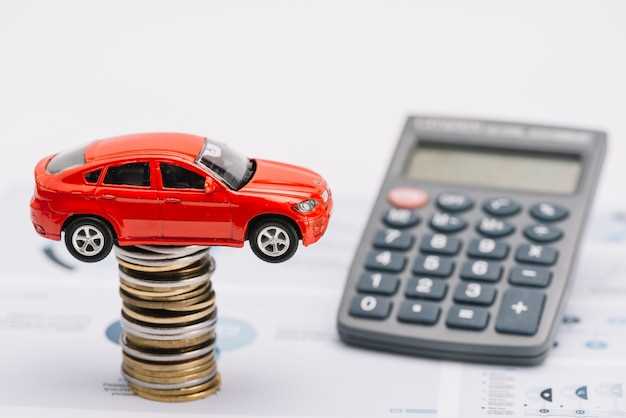
How to budget for major car repairs
- Dominique Kaye
- 0
- Posted on

Owning a car often comes with a set of financial responsibilities that can sometimes be overwhelming, especially when faced with significant repairs. The unexpected nature of car repairs can derail even the most carefully planned budgets, leaving many drivers unprepared for the financial impact. Understanding how to effectively manage these expenses is crucial in maintaining both your vehicle and financial health.
In this article, we will explore budgeting tips that can help you navigate the often rocky terrain of substantial car repairs. From establishing an emergency fund to prioritizing repair costs, we aim to equip you with practical strategies that will empower you to tackle any car-related financial challenges that may arise.
Properly budgeting for car repairs not only aids in alleviating stress but also ensures that you remain proactive rather than reactive when faced with automotive issues. By following these tips, you can minimize the financial burden of repairs and keep your car running smoothly while safeguarding your overall financial stability.
Setting Up a Repair Savings Fund: Key Steps and Strategies

Creating a dedicated savings fund for significant car repair expenses is essential for effective financial planning. By following these key steps, you can ensure that you’re prepared for any unexpected automotive costs.
1. Assess Your Average Repair Costs: Begin by evaluating past repair expenses to understand the potential costs you might face. Consider factors such as age, make, and model of your car, as these elements can affect the likelihood of future repairs.
2. Set a Monthly Savings Goal: Once you have a solid grasp of your expected repair costs, calculate a monthly savings target. Divide your total projected expenses by the number of months until you anticipate needing funds, ensuring your goal is realistic and attainable.
3. Open a Separate Savings Account: Consider establishing a dedicated savings account for your repair fund. This separation helps you track your progress and prevents the temptation to use these funds for other expenses.
4. Automate Your Savings: To enhance your budgeting strategy, set up automatic transfers to your repair savings account each month. Automation simplifies the process and ensures consistent contributions without manual intervention.
5. Review and Adjust Regularly: Regularly assess your savings progress and repair costs. If you find that your initial estimates were off, be prepared to adjust your monthly contributions accordingly to stay on track for future repairs.
6. Build Additional Reserves: In addition to your core savings, consider adding a bit extra each month to create a buffer. This additional cushion can provide peace of mind, particularly if you face unexpected and costly repairs.
By implementing these strategies, you’ll be equipped with the financial means to handle significant car repairs, helping to minimize stress and keep your vehicle in optimal condition.
Identifying and Prioritizing Necessary Repairs to Manage Costs

When facing significant car repair expenses, the first step is identifying which repairs are necessary. Begin by consulting a trusted mechanic who can provide a detailed assessment of your vehicle’s condition. This evaluation should highlight both immediate issues and potential future problems that could arise if repairs are postponed.
Once you have a comprehensive list of repairs, prioritize them based on urgency and severity. For instance, safety-related repairs, such as brake or tire issues, should take precedence over cosmetic fixes or minor adjustments. Use a ranking system to categorize repairs as critical, necessary, or optional. This method allows for effective financial planning, ensuring that your budget aligns with the most pressing needs first.
Be prepared to allocate funds carefully. If the total cost of all necessary repairs exceeds your available budget, consider which issues can be addressed incrementally. Focus on completing critical repairs first to ensure safety and functionality; then, plan for subsequent repairs over time. This strategic approach minimizes financial strain while keeping your vehicle in good working condition.
Document all findings and repair estimates. Having this information organized will help you stay on track with your financial planning and make informed decisions in case of unexpected expenses. Additionally, tracking your expenses will assist you in identifying patterns or recurring issues, enabling you to adjust your budgeting strategies accordingly.
Comparing Repair Estimates: How to Find the Best Deal
When faced with significant car repairs, obtaining multiple estimates is essential for effective financial planning. Start by gathering at least three quotes from different mechanics. This will provide a clearer picture of the average costs associated with the necessary repairs. Remember, the lowest estimate isn’t always the best option; consider the reputation and warranty offered by the repair shop as well.
Ensure that each estimate includes a detailed breakdown of parts and labor. This transparency allows for easier comparisons and helps identify any discrepancies in pricing. Pay attention to the quality of parts used–OEM (Original Equipment Manufacturer) parts may cost more upfront but could lead to fewer repairs in the long run.
Don’t hesitate to ask questions regarding the estimates. Inquire about the rationale behind the costs, potential additional expenses, and the estimated timeline for completion. This dialogue not only clarifies any uncertainties but also gives insight into the mechanic’s expertise and customer service approach.
Additionally, consider the payment options available to you. Some repair shops may offer financing plans that can alleviate the immediate financial burden. Weighing these options is an integral part of your overall budgeting strategy.
Lastly, factor in reviews and recommendations from trusted sources. Online platforms and word-of-mouth can significantly influence your decision in selecting the most suitable repair service. Ultimately, a thorough comparison of estimates leads to informed choices, ensuring both your car’s reliability and your financial well-being.
